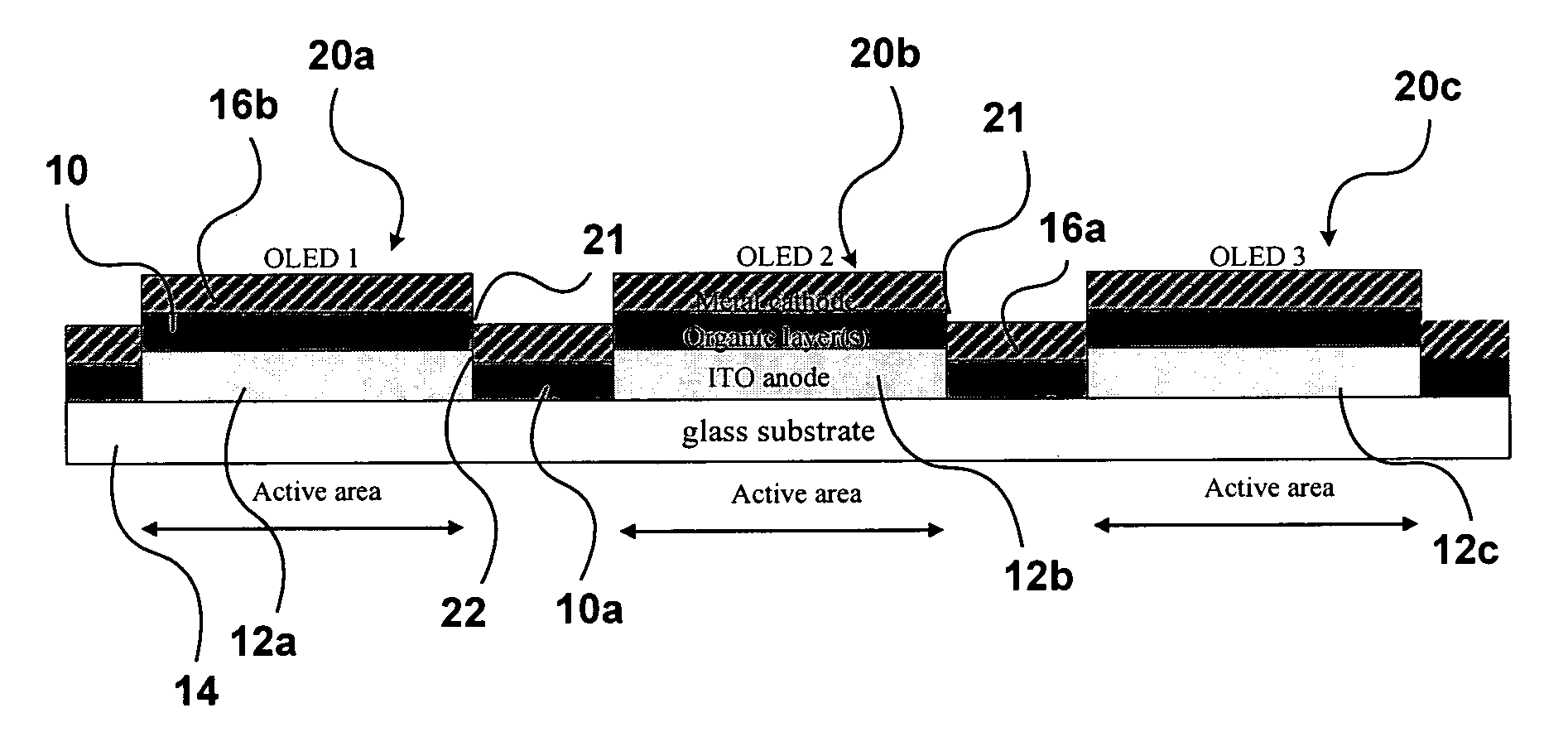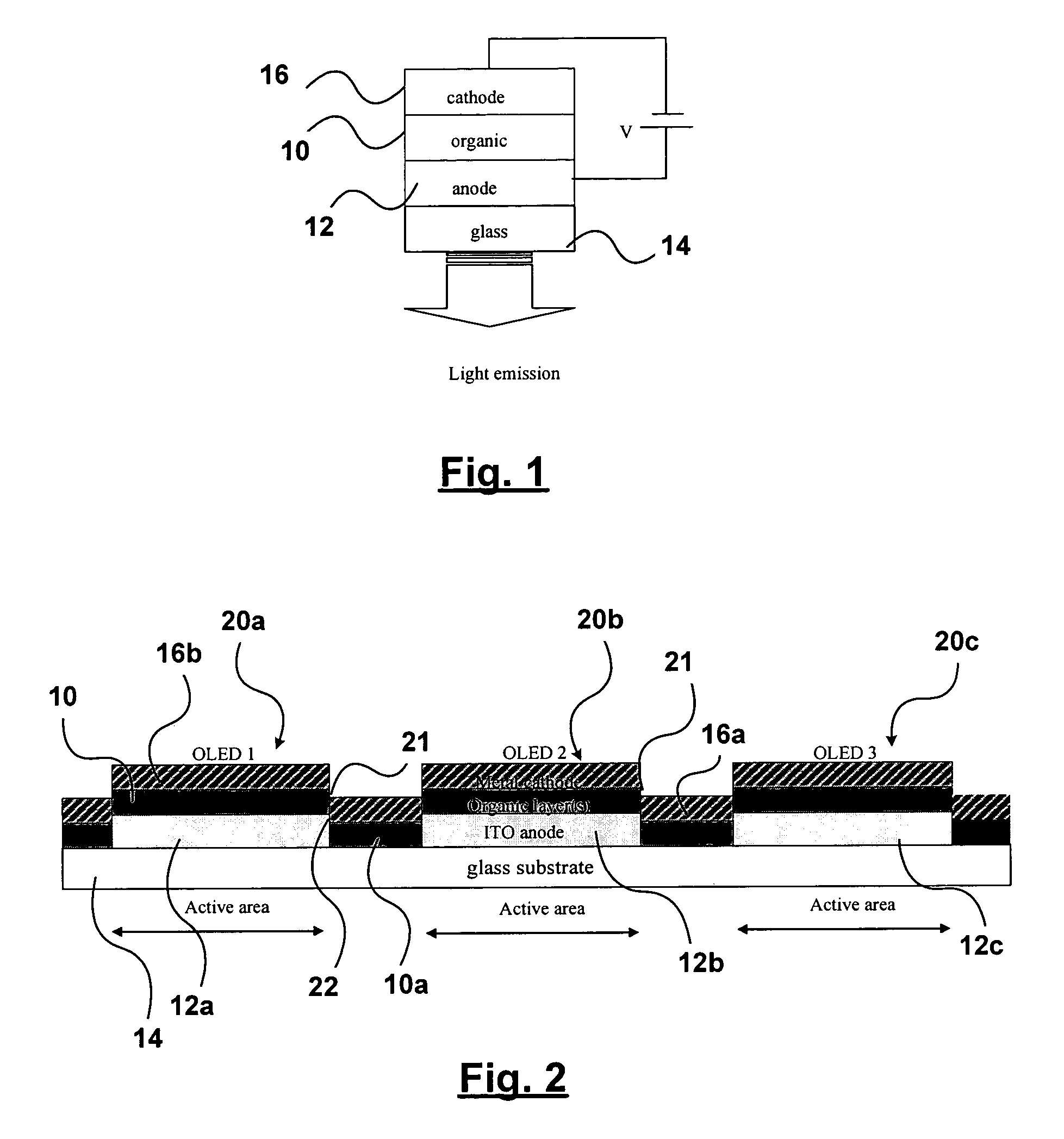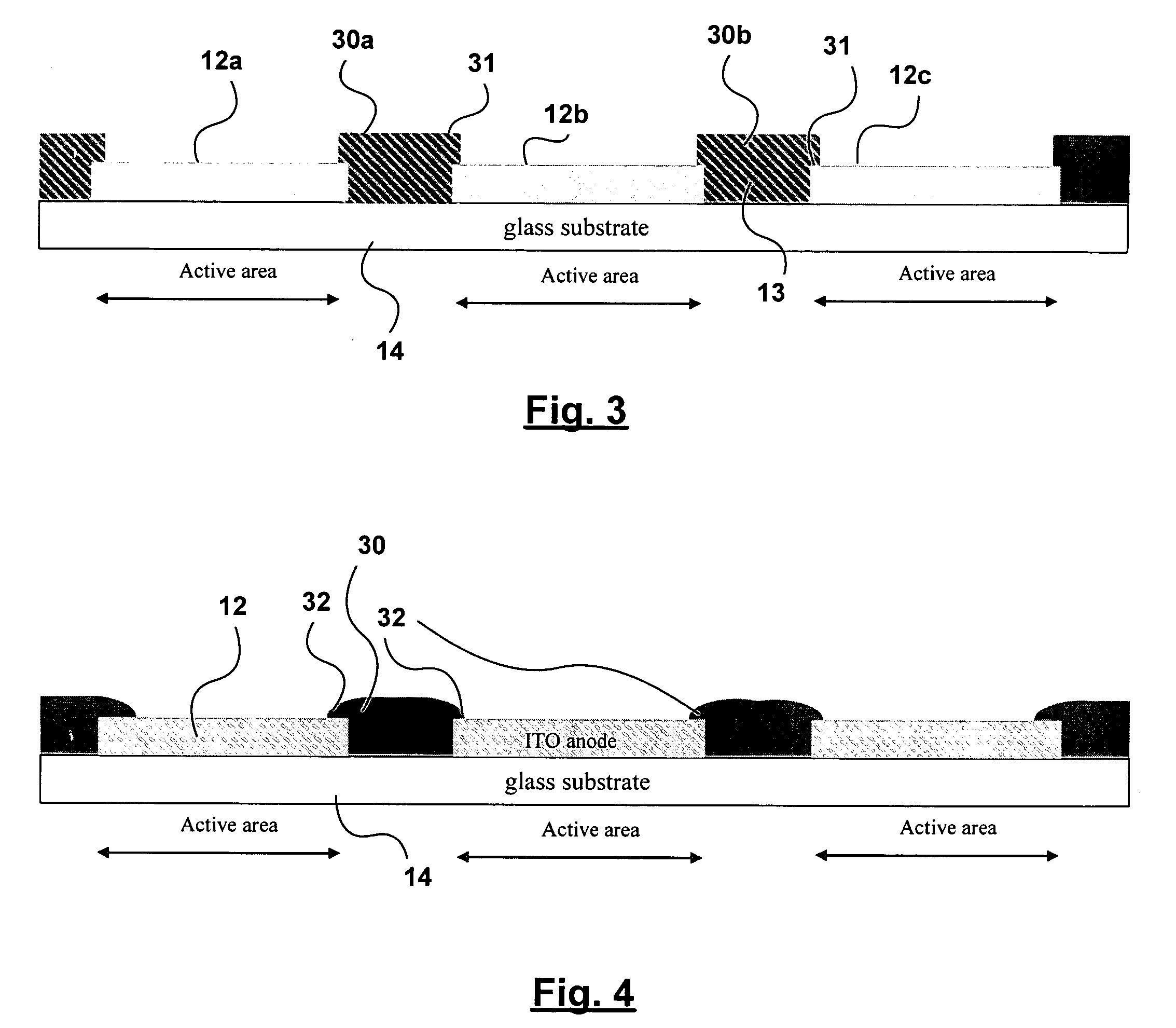Photoresist mask/smoothing layer ensuring the field homogeneity and better step-coverage in OLED displays
a technology of photoresist and mask, which is applied in the manufacture of electric discharge tubes/lamps, cold cathode manufacturing, and electromechanical systems, etc., can solve the problems of device failure in individual pixels or segments, device breakage, and large short circuit in devices, and achieves simplified sloping
- Summary
- Abstract
- Description
- Claims
- Application Information
AI Technical Summary
Benefits of technology
Problems solved by technology
Method used
Image
Examples
Embodiment Construction
[0026]A method of making an OLED in accordance with one embodiment of the invention will now be described with reference FIGS. 3 and 4. An ITO coated glass substrate 14 is cleaned in a conventional manner. The ITO layer 12 is then patterned and etched to produce individual anodes 12a, 12b, 12c. It will be appreciated that other suitable transparent materials can be employed for the substrate.
[0027]A layer of commercial photoresist 30 approximately 0.2˜2μm thick is applied between the individual anodes. This layer is exposed and developed to leave the individual columns 30a, 30b of photoresist protruding between the individual anodes and overhanging slightly over the step edges 31 of the anodes 12.
[0028]The wafer is then subjected to a baking step in which the photoresist reflows to produce columns with tapered edges 32 overhanging the exposed portions of the individual anodes as shown in FIG. 4.
[0029]The photoresist layer acts as a mask for the subsequent deposition by thermal evapo...
PUM
 Login to View More
Login to View More Abstract
Description
Claims
Application Information
 Login to View More
Login to View More - R&D
- Intellectual Property
- Life Sciences
- Materials
- Tech Scout
- Unparalleled Data Quality
- Higher Quality Content
- 60% Fewer Hallucinations
Browse by: Latest US Patents, China's latest patents, Technical Efficacy Thesaurus, Application Domain, Technology Topic, Popular Technical Reports.
© 2025 PatSnap. All rights reserved.Legal|Privacy policy|Modern Slavery Act Transparency Statement|Sitemap|About US| Contact US: help@patsnap.com



